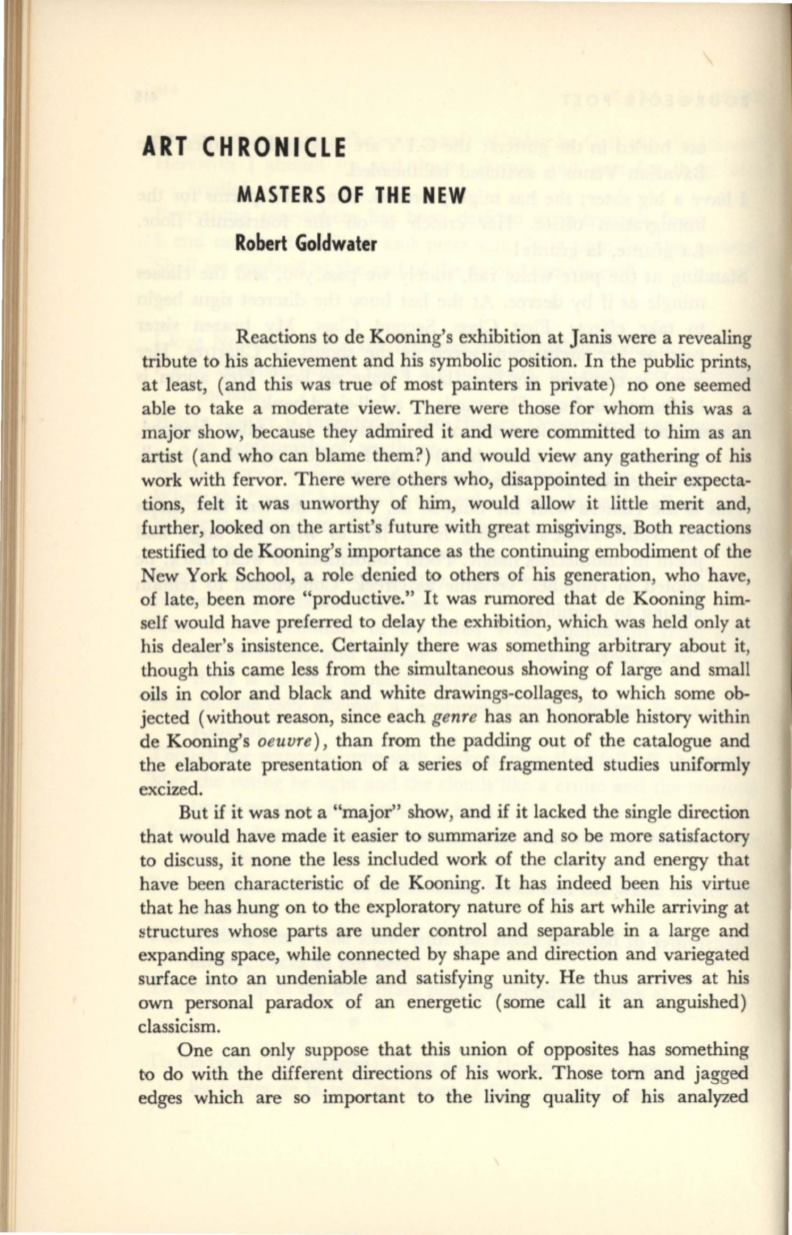
ART CHRONICLE
MASTERS OF THE NEW
Robert Goldwater
Reactions to de Kooning's exhibition at Janis were a revealing
tribute to his achievement and his symbolic position. In the public prints,
at least, (and this was true of most painters in private) no one seemed
able to take a moderate view. There were those for whom this was a
major show, because they admired it and were committed to him as an
artist (and who can blame them?) and would view any gathering of his
work with fervor. There were others who, disappointed in their expecta–
tions, felt it was unworthy of him, would allow it little merit and,
further, looked on the artist's future with great misgivings. Both reactions
testified to de Kooning's importance as the continuing embodiment of the
New York School, a role denied to others of his generation, who have,
of late, been more "productive." It was rumored that de Kooning him–
self would have preferred to delay the exhibition, which was held only at
his dealer's insistence. Certainly there was something arbitrary about it,
though this came less from the simultaneous showing of large and small
oils in color and black and white drawings-collages, to which some ob–
jected (without reason, since each
genre
has an honorable history within
de Kooning's
oeuvre),
than from the padding out of the catalogue and
the elaborate presentation of a series of fragmented studies uniformly
excized.
But
if
it was not a "major" show, and if it lacked the single direction
that would have made it easier to summarize and so be more satisfactory
to discuss, it none the less included work of the clarity and energy that
have been characteristic of de Kooning. It has indeed been his virtue
that he has hung on to the exploratory nature of his
art
while arriving at
structures whose parts are under control and separable in a large and
expanding space, while connected by shape and direction and variegated
surface into an undeniable and satisfying unity. He thus arrives at his
own personal paradox of an energetic (some call it an anguished)
classicism.
One can only suppose that this union of opposites has something
to
do with the different directions of his work. Those torn and jagged
edges which are so important to the living quality of his analyzed


